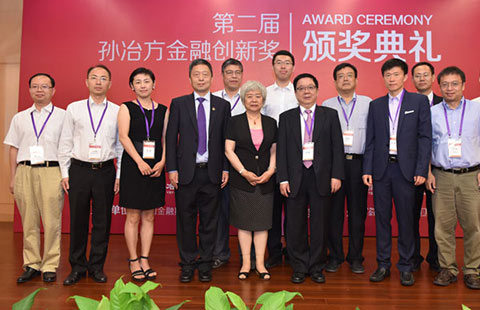China's healthcare: The case for a joint approach
By Karen Prosser (China Daily) Updated: 2012-08-15 08:02Over the past decade the speed of development in China has placed the country's infrastructure under increased pressure.
This is never more apparent than in the healthcare market, where, despite increased spending over the past six years, access to quality clinical services that respond to the wave of challenges China faces are far from what the population expects or needs.
A growing elderly population, who tend to require more complex care, has increased the strain on hospitals, while the rise in lifestyle diseases such as diabetes, heart disease and cancer has created a need for more specific types of treatment and preventative care.
Furthermore, a growing affluent middle class demographic has raised expectations about the level of service on offer, particularly those who have worked or studied overseas and become accustomed to receiving top-class healthcare whenever they need it.
Rather than simply go to the hospital when you are sick, the Chinese population is increasingly interested in being more proactive in managing its health, all of which has led to significant interest in the development of international or private hospitals, particularly for patients who are willing to pay, either via insurance or with their own savings.
In order to capitalize on this demand, new solutions are being considered around how to develop, finance, deliver and operate the next generation of healthcare assets.
Since 2008, about 200 joint venture applications have been submitted for the provision of new overseas-owned private medical institutions.
More than 60 of these are operational today and the success of many of these projects has led to an increased appetite amongst Chinese and international developers, investors and operators, to pursue a similar arrangement.
This is particularly the case where such an agreement can help to secure access to land, funding of initial capital costs and expertise in construction, clinical and operational service delivery.
Case for investment
While joint-venture hospitals in China can be both profit and non-profit making organizations, the success of either depends on meeting a number of key factors.
First, given that the success of any organization will depend on attracting patients who are willing to pay a premium to see a doctor, it is crucial that the asset is located in a region where there are large numbers of people who have the ability to pay themselves or have access to private insurance.
The design of these hospitals must also be aligned with both the clinical services that will be delivered there and the wider market demand.
More efficient buildings don't just cost less to operate, but also require fewer employees, which is of importance given the current skills shortage in the Chinese market.
However, before these schemes become operational they need to be built, which inevitably requires funding. In order to secure investment in healthcare projects in China, developers must have a robust business case in place that provides an overview of the hospital's baseline operating costs, clear budgets from a capital and operational perspective, the expected patient mix along with the consequent income that will be achieved in the short, medium and long term.
This level of planning will be crucial in helping to provide financial backers with the assurance they need that their partners who will operate the hospital for both clinical and operational services, are the correct ones and have the credibility and experience to deliver on the shared vision.
A third issue that needs to be addressed at the very outset is securing access to a suitable parcel of land. The length of time it can take to gain approval to develop a site or to meet the necessary requirements is a major concern and something that continues to deter international organizations.
Finally, before the assets are complete it is important that a long-term strategy is in place that outlines how the quality of services provided will be maintained over the long-term.
Across China, there is a desire to work with international organizations to not only improve the delivery of public care, but also help to develop local talent and expertise.
There are significant numbers of international hospital operators who want to enter China, however they will also require appropriate registration to enable them to work as a medical institution within this market.
In China today, there is a clear directive from both central and local governments on how joint venture structures should be formed.
While this is currently under review, many of the core elements are unlikely to change and, consequently, new entrants to the market will need to understand what is required of them and what constraints they may face compared to what they are used to operating under elsewhere.
When setting up a partnership, an organization must meet the requirements for health institutions, which include showing that the new facility will enhance or assist with the lack of adequate medical service capability, treatment, funding and provision of medical care.
Furthermore, the overseas shareholding within the joint venture must not exceed 70 percent and the joint venture agreement must also meet expectations on the form and threshold for investment.
The review currently under way may help to make the formation of joint ventures more attractive, particularly when it comes to the development of senior care facilities, where requirements are already more relaxed than other asset classes.
However, regardless of the outcome, further work may be required in convincing international investors and operators that this market provides them with long term and viable opportunities. The cost of developing such assets is high, and in the face of competition from other areas of the world where access to the market is easier, China may appear a less attractive country in which to operate.
Where internal funding and operators are available within China this may be less of a concern. However, as market demand grows and the desire to improve both public and private hospitals increases, being able to access international support will be of real benefit.
This will not only help to improve the way people in China are cared for but will also help to reduce the current trend of outward health tourism.
International hospitals do not have all the answers, but they do offer some great examples of what can be achieved, which can be molded to fit how healthcare is delivered within China.
This will provide a better solution not just for the rich but also for those who rely on public healthcare too.
More choice around which hospital to visit will inevitably raise standards and provide additional capacity, helping China to provide its population with access to excellent clinical services whenever they want.
The author is head of the health sector of EC Harris Asia-Pacific.
- China adjusts method of calculating GDP, including R&D expenditure
- Service sector expansion reflects restructuring
- Pierre & Vacances-Center Parcs Group joins HNA to bring in French style
- Postal Savings Bank of China files prelisting documents
- Alibaba said to pay $200m for Wandoujia app store
- Chinese govt discourages iron, steel exports amid lackluster demand
- Service mishaps highlight disconnect with users
- LSE and Deutsche Boerse may go Dutch to win over regulators


















